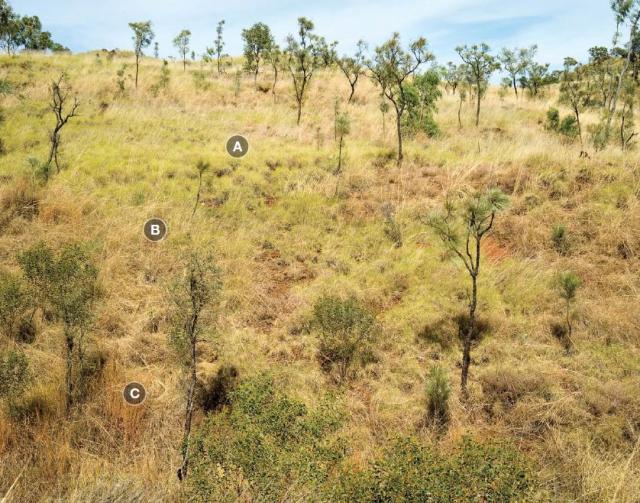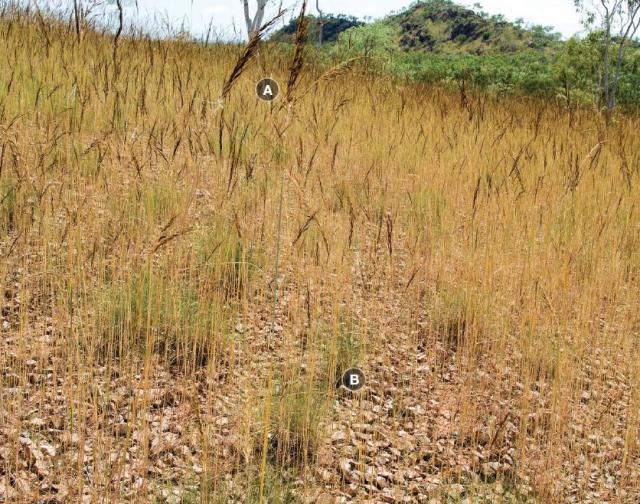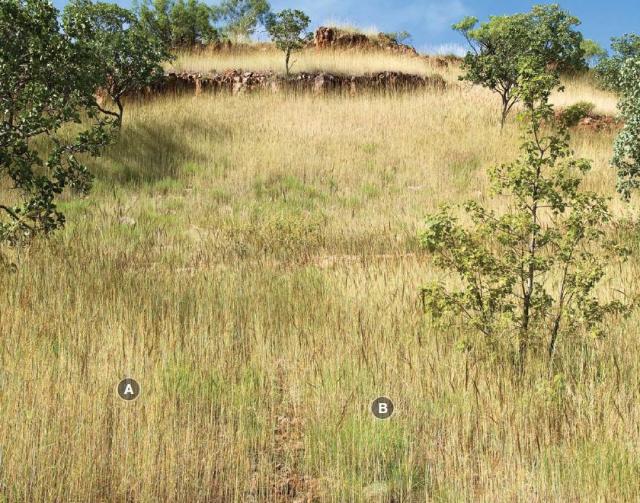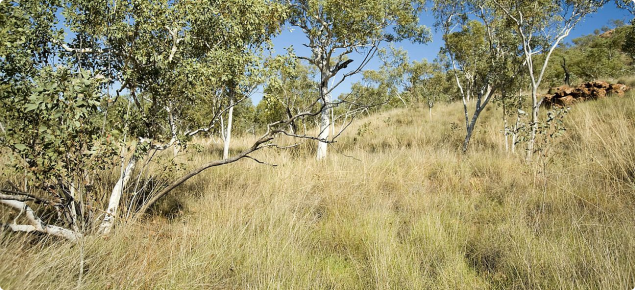Curly spinifex/annual sorghum hill pastures
These pastures are part of the Kimberley red soil group - spinifex pastures, and curly spinifex and annual sorghum are the identifier grasses. Use the interactive key to pasture condition to help identify pasture type.
Pastoral value
This pasture type is of low forage value and a decline in condition reduces the value even further. However, the relative inaccessibility of this pasture type means that it is unlikely to be heavily grazed under most circumstances. Excessive pressure on these pastures, due to frequent fire or hot fire in conjunction with grazing, reduces the frequency of curly spinifex plants. The amount of annual sorghum varies in response to rainfall and fire history, and its height varies in response to rainfall. Annual sorghum usually grows much taller in the higher rainfall areas in the north than it does further south.
Occurrence
These pastures are a mixture of curly spinifex and annual sorghum, occurring with a tree layer of eucalypts and small terminalias. They are found in various locations north of Halls Creek, and are most common on stony hillslopes with shallow soils.
Pasture condition
Good: In good pasture condition, these pastures are dominated by curly spinifex and annual sorghum. Curly spinifex is quite obvious among the taller sorghum plants, and a small amount of other perennial grasses may be present (Figure 1).

Fair: Condition decline in this pasture type is marked by a reduction in frequency of curly spinifex plants, with annual sorghum becoming far more obvious in fair condition as a result. Other perennial grasses, such as white grass and black speargrass, may also become more apparent in fair condition (Figure 2).

Poor: In poor condition, there are few curly spinifex plants left. Annual sorghum, an intermediate species, and undesirable species such as hard spinifex or threeawns, make up the bulk of the stand (Figure 3).

Associated plants
| Common name (link to DPIRD species page) | Scientific name | Life form |
|---|---|---|
| Desirable species | ||
| perennial grass | ||
| perennial grass | ||
| perennial grass | ||
| perennial grass | ||
| Intermediate species | ||
| annual grass | ||
| Wire grass, northern Wanderrie grass | perennial grass | |
| perennial grass | ||
| Undesirable species | ||
| Threeawn grasses | Aristida spp. | annual or perennial grasses |
| Triodia spp. | perennial grasses |

